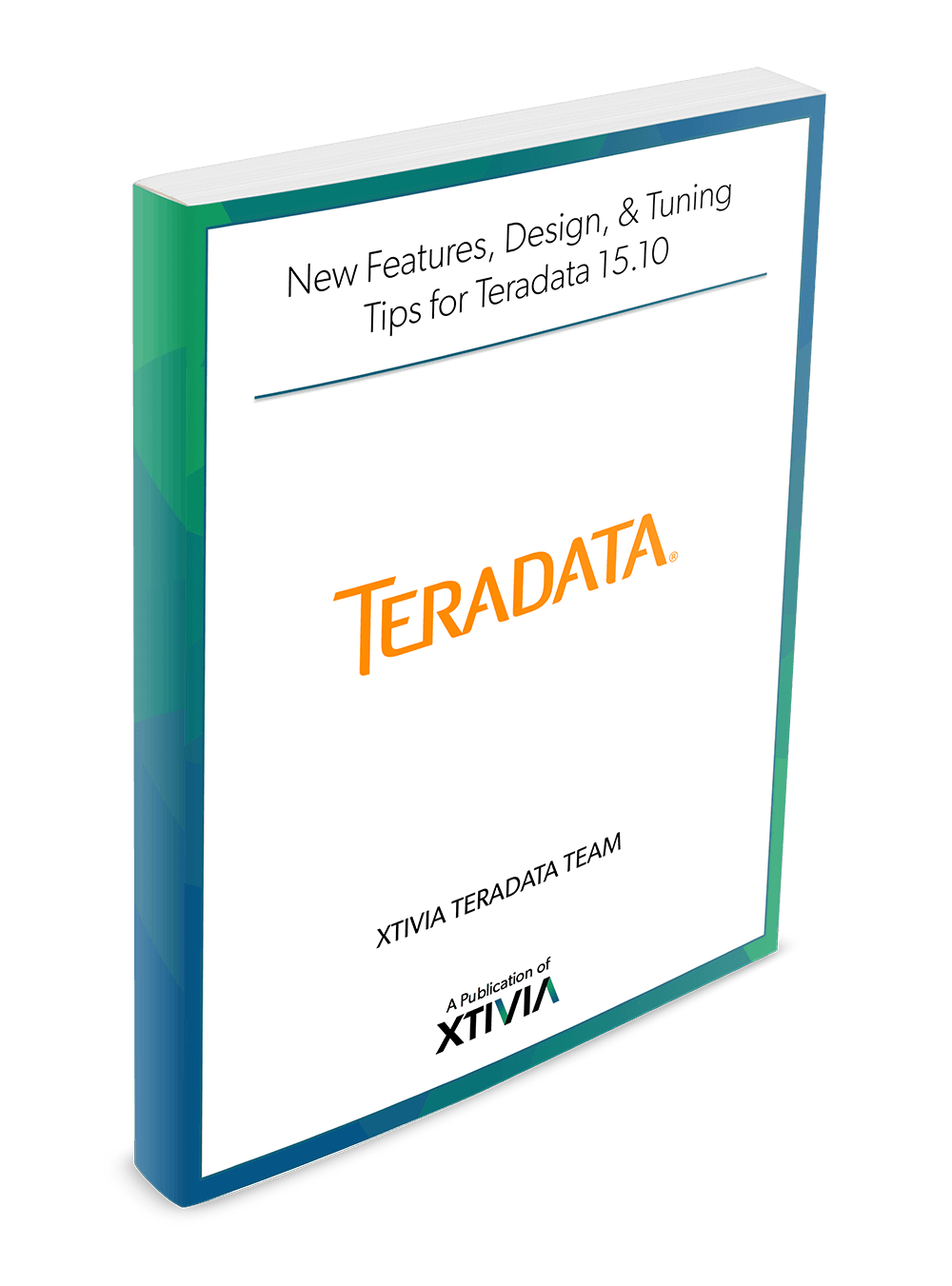Teradata Data
Warehousing
Teradata and XTIVIA – Your Data Warehousing Solution
Our Teradata Data Warehousing experts can help you implement and operate a mixed workload environment involving high volume batch data loads, tactical queries, analytical queries and real-time data integration. XTIVIA can help you leverage Teradata’s ability to process large volumes of structured and unstructured data in delivering insights to your end users.

Solutions Architecture & Development
- Teradata Physical Data Modeling
- Implement domain specific models
- Semantic Data Modeling
- Reporting and Analytics Implementation
- ETL/ELT design and development using Teradata Utilities, SQL, Procedures, Functions
Support Services
- Application Maintenance
- Database Design
- ETL/ELT
- Reporting
- Application Performance Tuning
- Teradata Managed Services
Our Approach
Our approach specific to Teradata Data Warehouse implementations is to take maximum advantage of Teradata parallel architecture and its performance features. Our experienced professionals work closely with end users and IT counterparts in understanding the current and future reporting, data storage, data movement, security and quality requirements in designing an optimal physical and semantic data model.
XTIVIA Accelerators and Frameworks
XDM (XTIVIA Data Warehouse Migrator)
Using our experience in the Data Warehousing and Business Intelligence industry, we have built a wizard based accelerator XDM (XTIVIA Data Warehouse Migrator) that can be used to speed up the Data Warehouse Migration to Teradata with minimal cost. Speeding up the migration process helps organizations realize the benefits of capital investment made in procuring Teradata appliance. Please visit The XTIVIA Data Warehouse Migrator Innovation for more information.
XTIVIA Teradata DBA Tools
MVC Tool
Table Skew Analyzer
Object DDL Comparison Tool
Tuning Environment Creator
Introduction to some new features (Teradata v 15.0, v 15.10)
Teradata JSON Support (v 15.0): Teradata added JSON support from v15.0 allowing the storage and processing of JSON objects in Teradata database. This allows schemaless reading and processing of semi-structured data. We can also publish the results of SQL queries in JSON format.
Teradata Directory Manager (v 15.0): Teradata provides a GUI tool TDM (Teradata Directory Manager) allowing easy mapping of Teradata objects to LDAP directory users. To use TDM, one needs to have a dedicated directory exclusively to be used by Teradata database. This reduces the impact on enterprise LDAP. TDM is available for free and supports all Teradata versions that can use Teradata 14 JDBC drivers.
Auto Provisioning (v 15.10): Effective v15.10, a database user is automatically created for external users (directory users not mapped to Teradata database user) upon their first login. In previous releases, a generic Teradata pseudo-user EXTUSER was used to identify external users which means individual user activity could not be logged and tracked. EXTUSER could not own database objects. With the Auto Provisioning feature, authentic LDAP users get quick database logon without Administrator’s intervention. This feature is turned off by default and it can be turned on by setting the DBSControl AutoProvision field to true.

Download the free Teradata Report
Take the guesswork out of 15.10… New Features, Design, & Tuning Tips for Teradata 15.10 has all the details in one report, from our Expert Teradata team.
Intelligent Memory Improvements (v 15.10)
Partition-Level Locking (v 15.10)
Teradata Secure Zones (v 15.10)
New PI on Access Rights Table (v 15.10)
XTIVIA's UNIQUE APPROACH
We build solutions, plain and simple. We identify problems and solve them—for others—for you.
To understand your business needs, we have to understand your technology challenges.
At XTIVIA, the relationship is step one.
XTIVIA's UNIQUE APPROACH
We build solutions, plain and simple. We identify problems and solve them-for others-for you. To understand your business needs, we have to understand your technology challenges. At XTIVIA, the relationship is step one.
Let's Talk Today!
XTIVIA CORPORATE OFFICE
304 South 8th Street, Suite 201
Colorado Springs, CO 80905 USA
Additional offices in New York, New Jersey,
Missouri, Texas, Virginia, and Hyderabad, India.
USA toll free: 888-685-3101, ext. 2
International: +1 719-685-3100, ext. 2
Fax: +1 719-685-3400
XTIVIA needs the contact information you provide to us to contact you about our products and services. You may unsubscribe from these communications at anytime, read our Privacy Policy here.
